Categories
Media / Blog
HEALING THROUGH THE CENTURIES: TRACING THE HISTORY OF BATH ARCHITECTURE IN JAPAN
By Kimberly Hughes
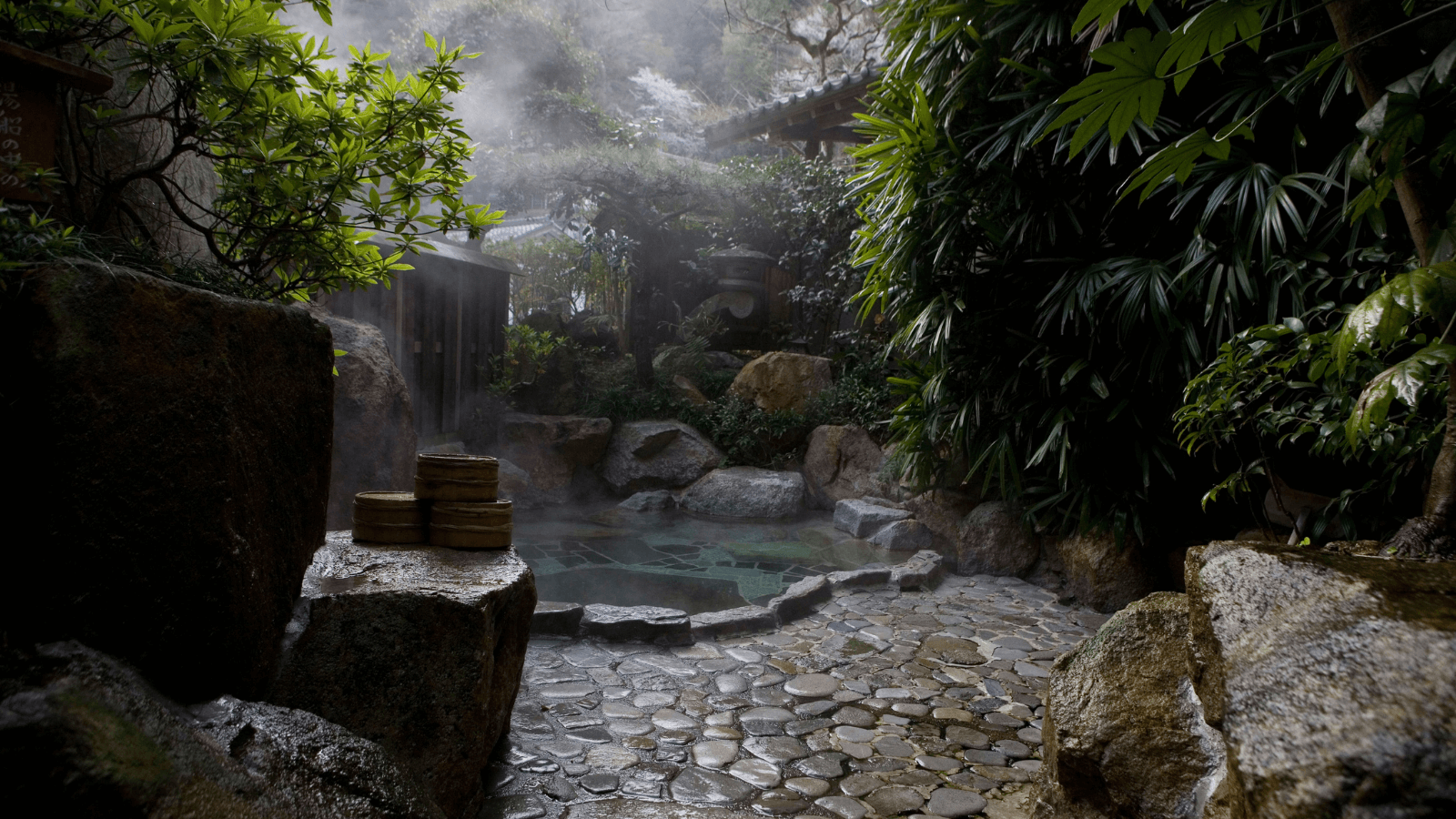
Steeped in a profound connection to natural and spiritual elements, Japanese bathing culture is as much about relaxation and healing as it is cleansing oneself. This is in turn integrated within both the architectural and aesthetic elements of the bath.
Central to this story is Japan’s geography, with abundant onsen (natural hot springs) pouring forth from the volcanic chains dotting the length of its archipelago. The act of bathing is historically associated with purification rituals related to Shinto, as well as to the Buddhist temples on whose grounds the country’s first bathhouses appeared. Japan’s earliest bathing practices involved enveloping oneself in clouds of steam from the mineral-rich onsen, with full-body submersion becoming commonplace during the early 20th century.
The onsen waters’ widely lauded healing properties are said to include refreshed skin, improved sleep, and relief from numerous physical ailments. This gave rise to numerous forms of au naturel rituals in addition to the traditional bathing experience of a long and calming soak. These have included steam baths (often accented by medicinal herbs), mud bathing, and immersion in coastal sand pits to enhance deep relaxation and wellness.
The practice of communal bathing or hada no tsukiai (literally, “naked communication with others”) became widespread at public baths known as sento. Serving as an important mode for daily social interaction in urban areas, these facilities were particularly popular during the Edo period, beginning with steam and foot baths. Drawing waters from sources other than natural hot springs, sento were constructed primarily from wood, with faucets appearing during the early 1900s.
Following WWII, wealthy households began to enjoy baths inside the home. Known as ofuro, these bathtubs were typically heated via wood-burning stoves. Today in Japanese homes, bathtubs are a standard fixture, some crafted from woods including the exquisitely fragrant hinoki (Japanese cypress)—thereby combining tradition with modern luxury. Since the focus is on the tranquility of the bathing experience, with a separate space provided for cleansing the body beforehand, Japanese tubs are considerably deeper than their Western counterparts.
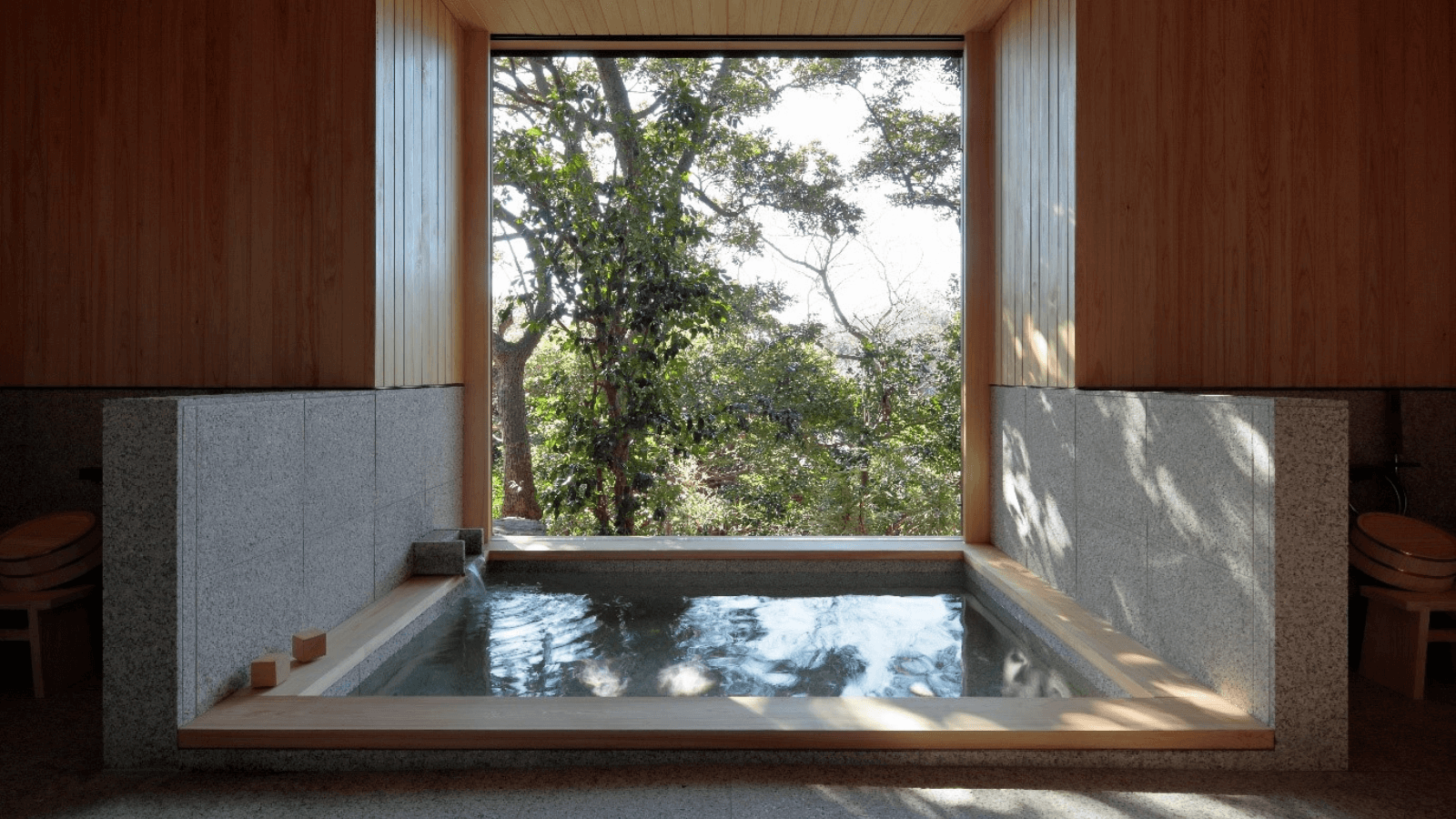
Some contemporary architects have placed the tub on the veranda in a nod to the traditional Japanese engawa, a terrace-style architectural feature that borders the living space—thereby blurring the distinction between inside and out.
This erasure of the indoor-outdoor distinction is a common feature of the ryokan (traditional inns) built around onsen throughout the country. These inns commonly fuse Japanese architecture with luxury designs, including tubs and elegantly sculpted rotemburo (outdoor baths) inlaid with natural stone that blend in flawlessly with the environment. Sometimes tucked alongside lush forests or waterfalls, the pools feature seasonal vistas that might involve snowflakes melting on your shoulders in winter or a flurry of cherry blossom petals covering the water’s surface in spring.
The result is an intricate connection between body and spirit; a calming experience enhanced by additional design elements that may include softly muted chromatics, washi paper lamps, aromatic tatami mats, and grounds built in accordance with the energetic principles of geomancy.
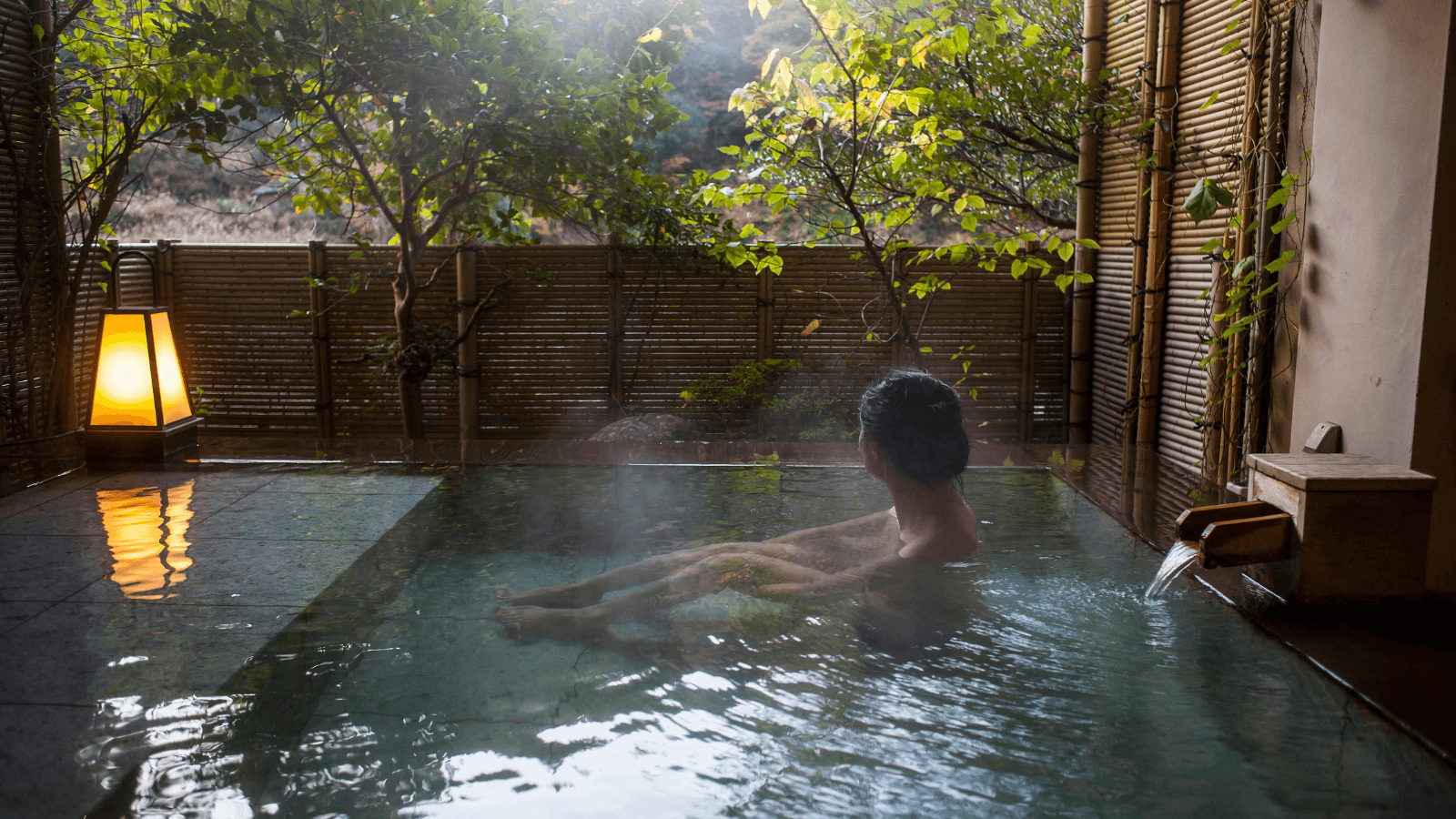
The onsen ryokan design has timeless appeal. According to Tomotaka Utsumi, founder of Japan International Architectural Design Center (JIAC), an agency that coordinates international projects for Japanese architects, traditional Japanese bathrooms, made of rugged natural stone and wood, like those seen in the hot spring inns “are becoming a trend,” reinterpreted with modern style.
Japanese architects such as Hitoshi Saruta, Tomoyuki Sudo, Hayato Komatsu, and Go Fujita are integrating views of nature in lieu of placing the bath outdoors. In Saruta’s design for a home in Kamakura and in Sudo’s Niseko River House, trees outside are reflected in the waters of the bath through glass walls. In Komatsu’s House in Iwakuni, a glass wall opens to an outdoor garden, and Fujita’s House in Shukugawa: F Residence features a skylight above the tub.
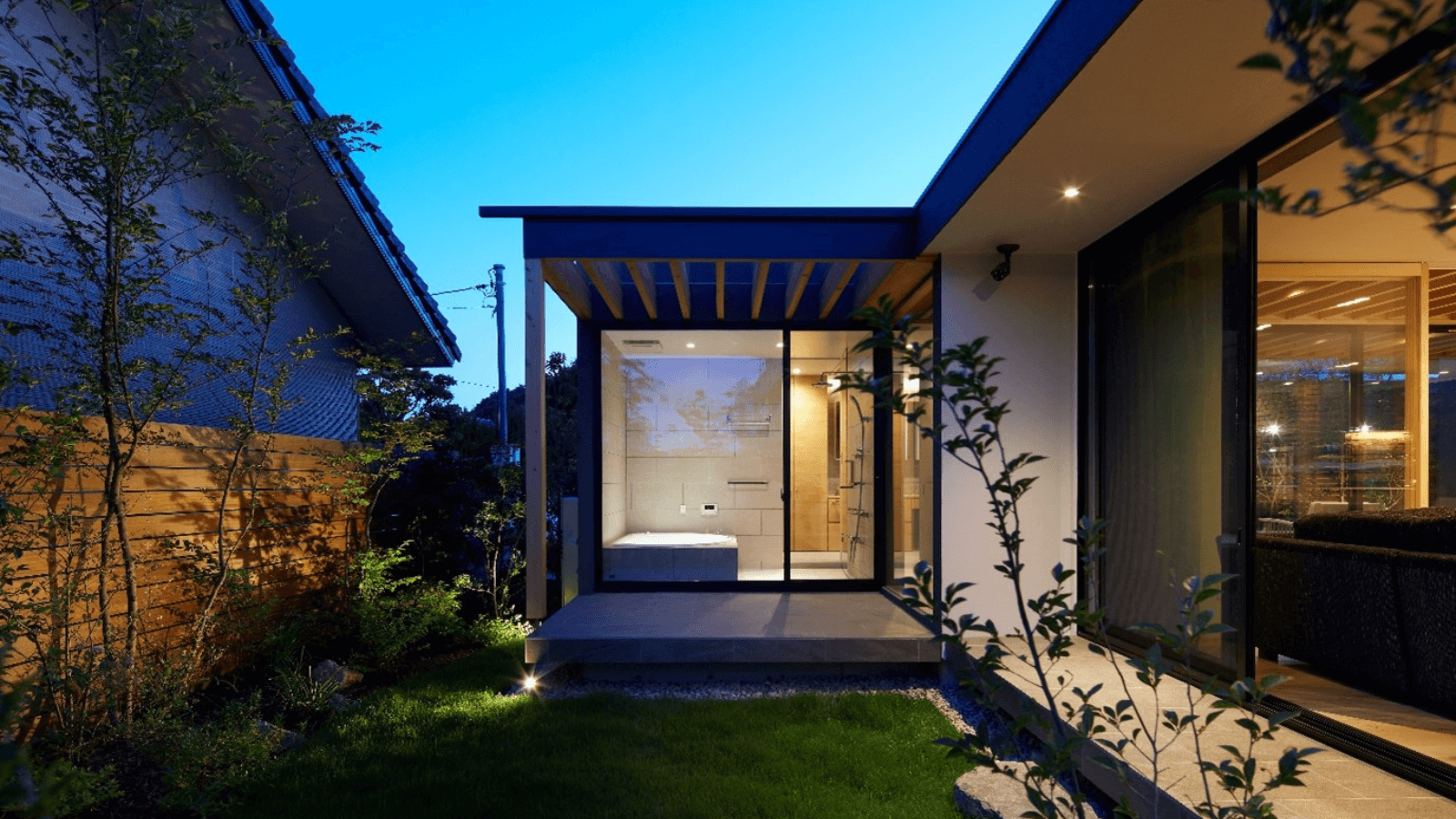
Said Saruta, “Soaking in a bath where there is a beautiful view is essential in releasing stress and for relaxing. Where there is a beautiful view, I design the bathroom so that it is integrated into the surroundings. For private residences as well, I will sometimes design a bathroom with a box garden, or a bathroom where the ceiling opens so that the sky above can be viewed. In creating a view, especially for the bathroom, the position and angle of the head when inside the bathtub are carefully considered. How the client can have the most spiritually rich and luxurious bath experience is a question that is consistently on my mind.”
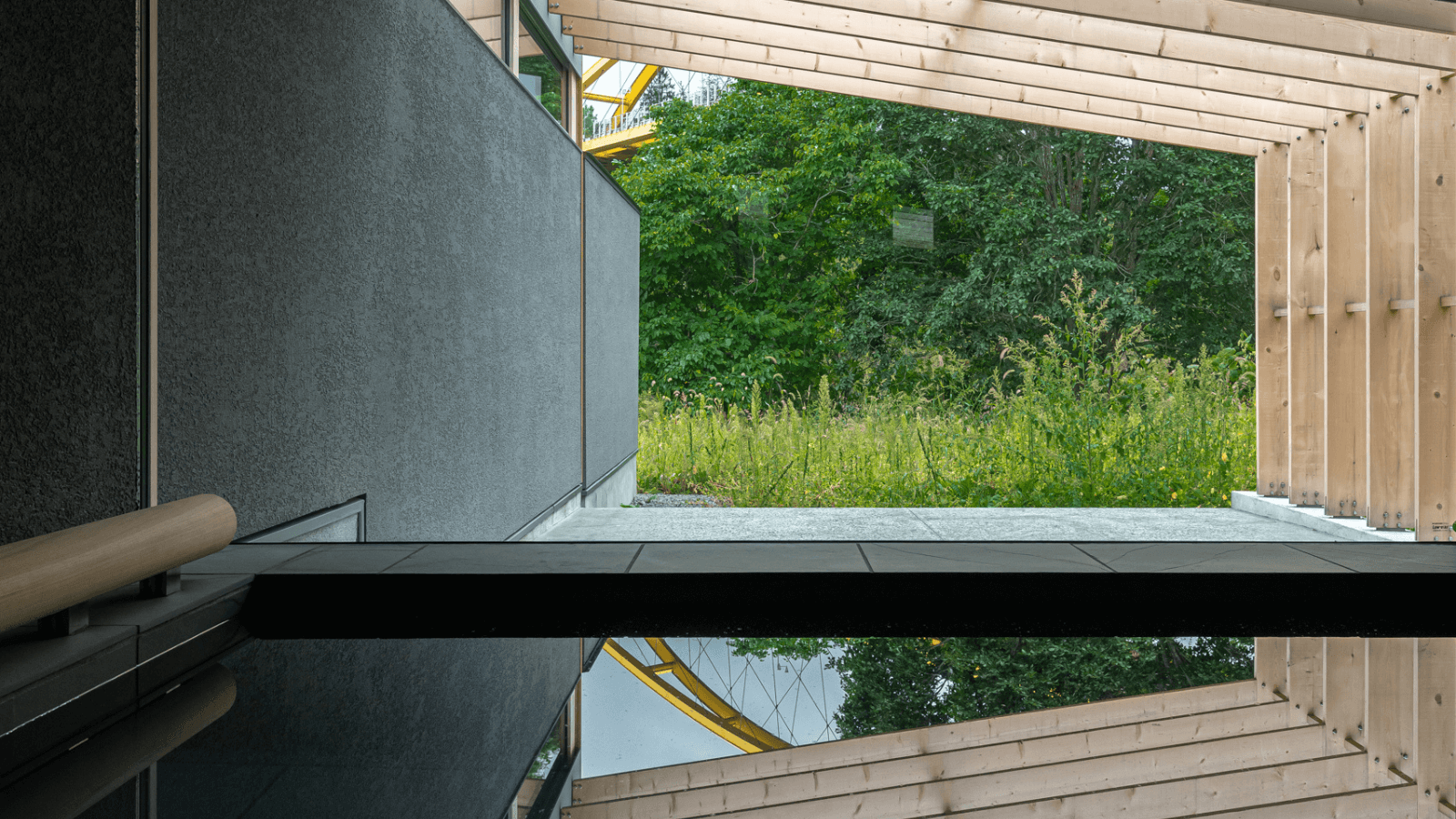
Utsumi observed that Japanese bath architecture’s influence is growing internationally, with “an increase in luxury bathrooms” featuring separate bath and toilet rooms, single drains for the bath and shower, and automation of bath water temperatures.
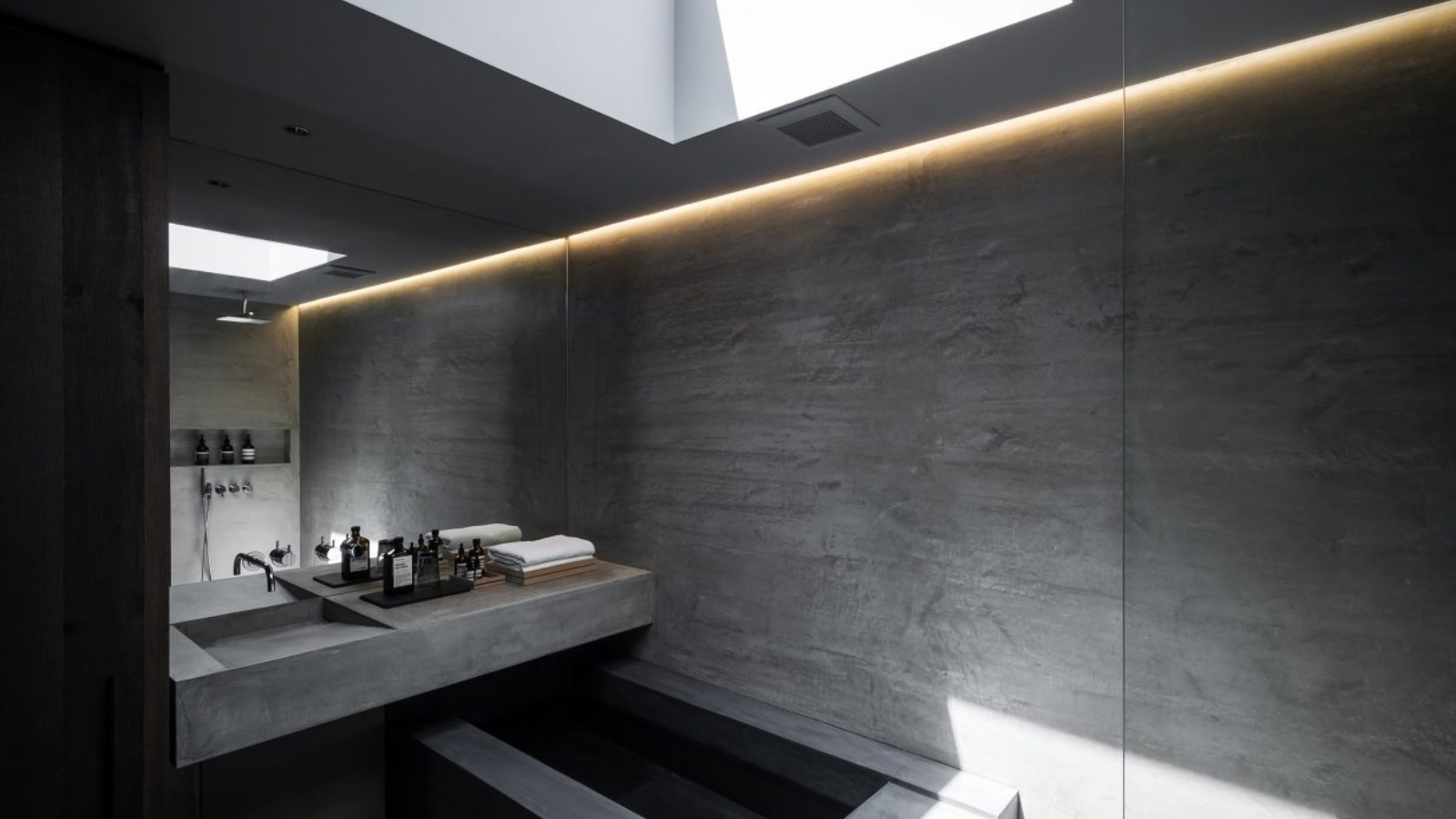
1: Yunomine Onsen, Wakayama, Japan, at 1,800 years, it is believed to be the country’s oldest.
2: T3 residence by Hitoshi Saruta. Photo: Koichi Torimura
3: Hotel Onsen in Fujiya Ryokan Accommodation Kawayu Onsen Kumano
4: Iwakuni by Hayato Komatsu, HAYATO KOMATSU ARCHITECTS. Photo: Toshiyuki Yano
5: Niseko River House by Tomoyuki Sudo, SAAD – Sudo Associates, Architecture and Design. Photo: Ikuya Sasaki
6: Shukugawa by Go Fujita, GOSIZE. Photo: Akiyoshi Fukuzawa